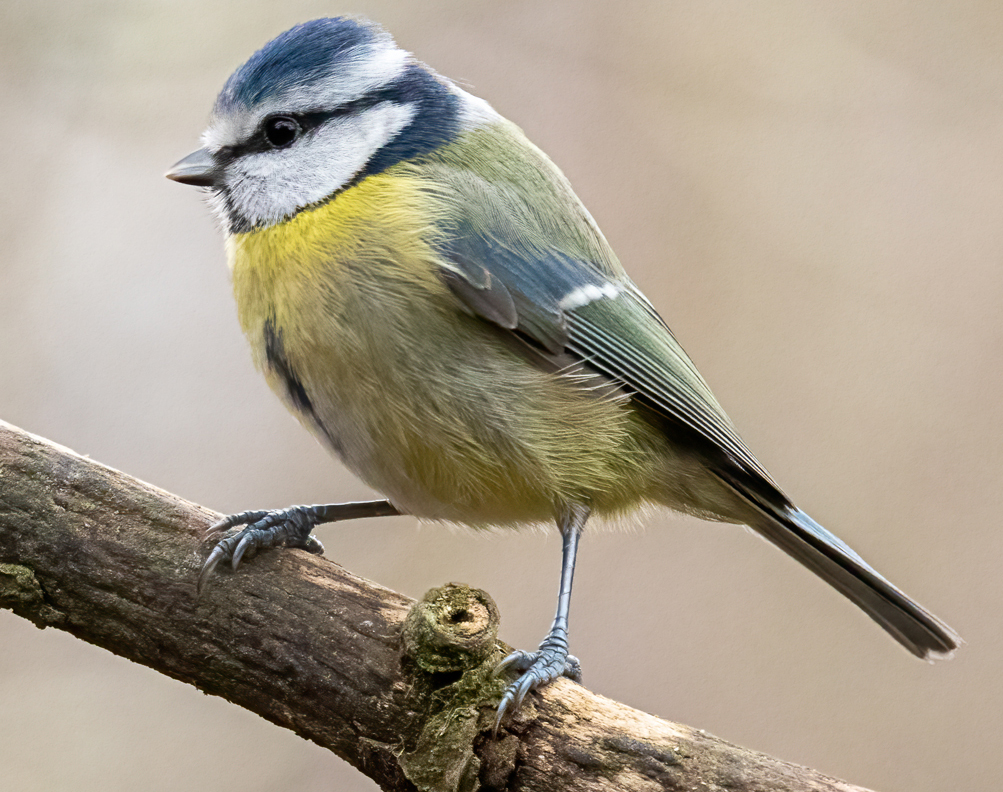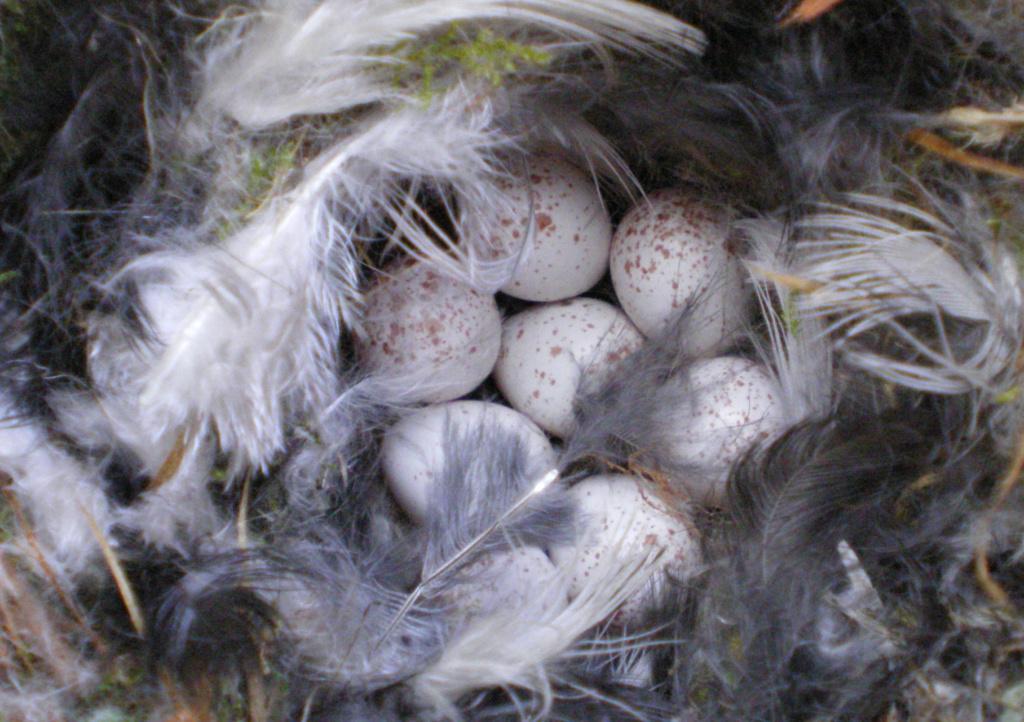Have you seen the bird of the month?
For April it is the: Blue Tit (Cyanistes caeruleus)

Where can I find them?
They are very common and can be seen in all areas of the reserve, throughout the year.
The best places to look and see them are around the Kitchen Garden, Netley Meadow and at some of the bird boxes, as they inspect them for a potential nesting location.
About the species
The Blue Tit is a delicate little bird, weighing around 11g (about the same weight as an old £1 coin). It is colourful with a mix of blue, yellow and green feathers, with white cheeks and a thin black eye stripe.
Males and females are virtually identical, although males are a slightly brighter blue on the head.
They can be seen naturally flitting among small branches of woodland trees looking for insects and spiders.
The species is on the UK green list, meaning its population is currently stable.
Blue Tits typically live for three years. They can see ultraviolet light and the Blue Tit’s blue crown is highly reflective under ultraviolet.

.They are resident birds and, although they roam in winter, it is rare for them to travel more than a few miles.
What do they sound like?
They have a variety of calls. Their typical call sounds like a pleasant high-pitched ‘tsee-tsee-tsee’ followed by a trill.
Where do they nest and what is the nest made from?
In the wild, their main nesting sites are in cavities or small holes in tree trunks. They are very adaptable and one of the most regular users of nesting boxes, found within the reserve. They are also known to use holes in walls, pipes and letter boxes!
The male will show the female a potential nesting site and she will decide if it is suitable. The female builds the nest alone, with the male bringing in some food for her at times.
The nest is made mostly of moss and the nest cup is lined with soft materials such as hair or down feathers.
The female will normally lay a clutch of around 6 – 10 eggs, one each day. Before laying the female will eat snail shells, to build up calcium levels. So, snail shells are turned into eggshells.
The eggs are incubated only by the female and for around 14 days. The chicks will then spend around 22 days in the nest before fledging. Sadly, not all chicks make it.
Blue Tit’s time their nests with the burst of trees (mainly the Oak). The chicks will be mostly fed on caterpillars and both parents will need to find as many as 1,000 caterpillars per day to feed them! They can not pop into a local food store 😊

A young Blue Tit can easily be told apart, with most of the blue being more subdued and greenish, and the cheeks yellow

If you manage to spot and photograph a Blue Tit, within the reserve, why not share it on our Facebook page?




